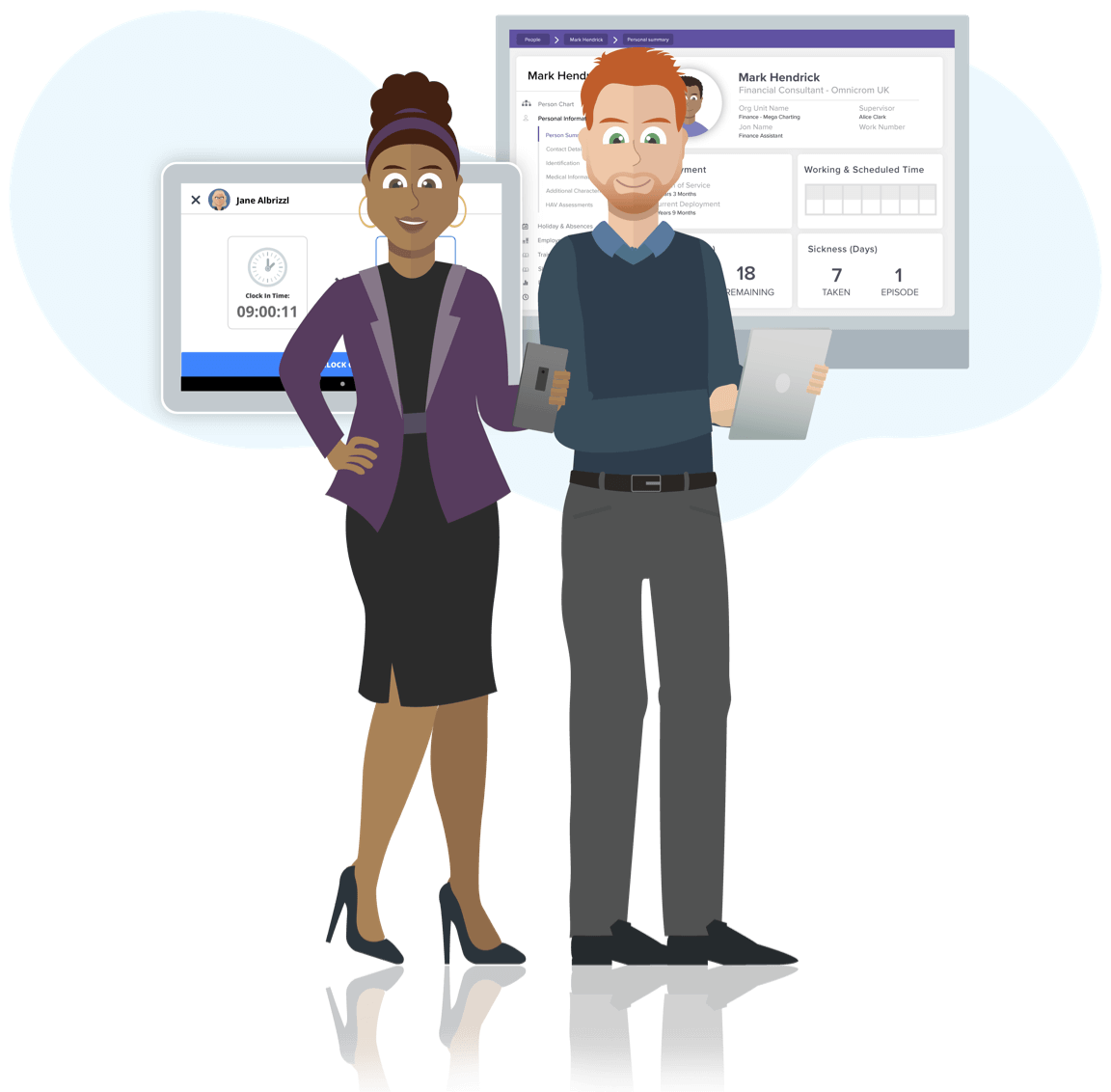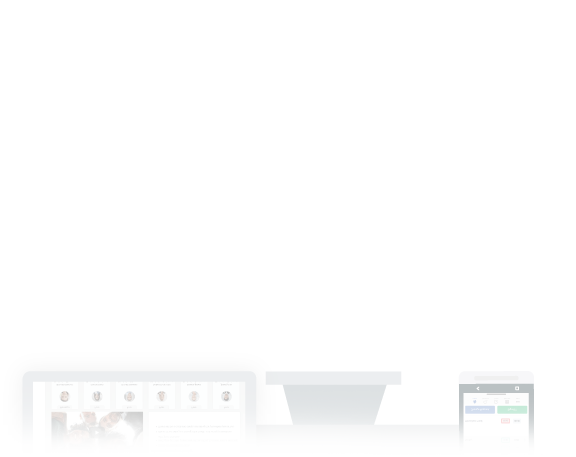What is Cloud HR software?
Cloud HR software describes human resources management software systems that are hosted in a Cloud-computing environment and provided as an online service to customers. They are also referred to as Software as a Service or SaaS HR.
Cloud-native versus Cloud-enabled
What are the different types of Cloud HR software?
Today, HRIS software falls into two camps: systems that have been developed for the Cloud – like Workday, Salesforce and Cezanne HR – and those that have been Cloud-enabled. On the surface, they often look the same. They address the same HR processes, are delivered online and are backed by a team of experts.
However, older systems use older code that has been enabled to run across the internet. This code is almost invariably more expensive to manage and maintain than newer systems built to fully exploit the lower costs and scalability of Cloud and mobile technology. That doesn’t mean an older system isn’t right for you. It just means that when considering your options, it’s important to make an informed decision.
Read about modern multi-tenancy systems
Too many vendors today are simply rebranding older deployment models as SaaS, on-demand or cloud. These solutions inevitable fail to live up to customer expectations for agility, standardisation and efficiency. Technology buyers should know what differentiates SaaS from other on-demand models cloud-washed with the SaaS term.
ForresterΙούλιος 2018
What are the benefits of Cloud HR systems?
-
Immediate Cost Savings
With Cloud HR, there’s no need to purchase extra hardware or software, or have IT staff on hand to set it up and manage it. Everything that’s required to keep your HR solution secure and running smoothly – from data back up to firewall maintenance – is managed by the vendor, meaning that you can start onboarding with no extra resources. The software really is delivered as a service.
-
Fast Set Up
As multi-tenanted solutions are set up for quick provisioning, HR vendors can normally give you a login to your own ‘instance’ of their software almost immediately. Like Cezanne HR, they may also provide tools or assistance to help with data import and other setup activities.
-
Quick Payback
With no software or hardware requirements and a quicker implementation process, payback is nearly always faster than for in-house or hosted HR solutions. In fact, since Cloud software vendors typically add new features every month or so, the value you get from your system is likely to increase rather than decrease over time.
-
Easier Access
As HR cloud-native solutions are designed to be used online, employee self-service is built in from the very start. Most should have robust roles-based security and approval workflow so that HR processes are handled effectively, and sensitive data kept safe. Some, like Cezanne HR, also have global capabilities at their core.
-
Automatic Updates
Multi-tenanted architecture means SaaS providers automatically roll out new features to all of their customers as soon as they are released. Releases are also more frequent since SaaS applications are easier to extend. Meaning your HR teams will never be left on an out-of-date system.
-
Better Use of Time
Managing and updating software can be a huge distraction for your HR managers – as well as your colleagues in IT. With SaaS, the vendor takes care of the system, including applying the latest updates, so you can concentrate on doing the HR tasks that matter the most.
-
Agility Built In
With SaaS, it is almost always easier to flex the system to meet your needs. Depending on your contractual terms, you should be able to add or remove employees, users, countries, or new modules whenever you need to. Cloud-first solutions are also able to take advantage of cost-reducing features, such as elastic load balancing, which ensures the infrastructure scales with you without incurring extra cost.
-
No Unscheduled Downtime
Most SaaS systems are hosted in state-of-the-art data centres, with processes in place to automatically protect your system should something go wrong, at any time of the day or night.
What is multi-tenanted SaaS HR?
Why it helps to understand the platform
Like an office block, multi-tenancy is when multiple customers share the same core code and infrastructure – the building’s common parts – but each customer has their own ‘instance’ or secure space.
With just one code base – or building – to maintain, adding new features is easier and cheaper, releases are simpler to manage, and all tenants are always on the latest release. As significantly, vendors have a vested interest in making sure that their systems run smoothly, all the time. If things don’t go well, they don’t just upset one tenant, but all of them. And, unlike office space, most SaaS supplies offer short contracts. Keeping customers happy really matters.

How to select a SaaS HR system
Four questions to ask your supplier
Cloud-enabled and Cloud-native systems look the same. Here are four easy ways you can check to see if your preferred suppliers are using the most up-to-date technology platform.
-
Is your system multi-tenanted?
Almost every business software system today are delivered as Software as a Service. However, that doesn’t mean all systems are built to take full advantage of the cost-efficiencies, scalability and agility of Cloud platforms. Instead of multi-tenanted architecture, they may simply co-locate software on one server which delivers some, but not all of the benefits of more modern platforms.
Companies that haven’t invested in making the move to a multi-tenanted product architecture may try to justify their approach by saying that multi-tenanted solutions aren’t as secure, and don’t perform as well as single-tenant alternatives.
Assuming you pick the right provider, that’s not true. Ask them to justify their response.
-
Will you add custom features just for me?
The answer should be “No, but we can look at including the new feature you want in a future release, so everyone can benefit from it”.
The key to the success of SaaS is that all customers share the same code, which means suppliers can manage their resources efficiently and you benefit from lower costs and more frequent product enhancements.
That doesn’t mean the system functionality is fixed. On the contrary, most SaaS systems are much more flexible than older systems and are updated with new features more frequently too. -
Can I opt-out of updates?
If you can, that means that your supplier will be managing multiple copies of their software, rather than a single, easier to manage, and cost-optimised code base.
It may feel like you are more in control if you take updates when it suits you, but in reality, SaaS vendors go out of their way to minimise disruption and let you ‘switch on’ new features when you are ready to use them.
So, the choice becomes whether you want to stay up to date and find ways of taking advantage of the new features that are available to you, or risk being left behind.
-
Can you give me my own login tomorrow?
Systems developed for a multi-tenanted approach are already up and running in the Cloud. It should take the supplier just a few minutes to set up your ‘instance’ of their HR system and give you your login.
Naturally, while you may want to log on and start to explore the features of your new HR system, you’ll still need to upload your data and configure the system to work the way you want it to. So, getting going won’t be immediate.
Some companies, like Cezanne HR, provide a helping hand so that this can be accomplished pretty quickly too.
